Light, creamy and sweet, the first bite into my savory crepe was definitely more than I was expecting. This crepe was thinner than any I’d ever had before: soft and delicate with a slightly crispy edge and with these subtle, milky flavors.
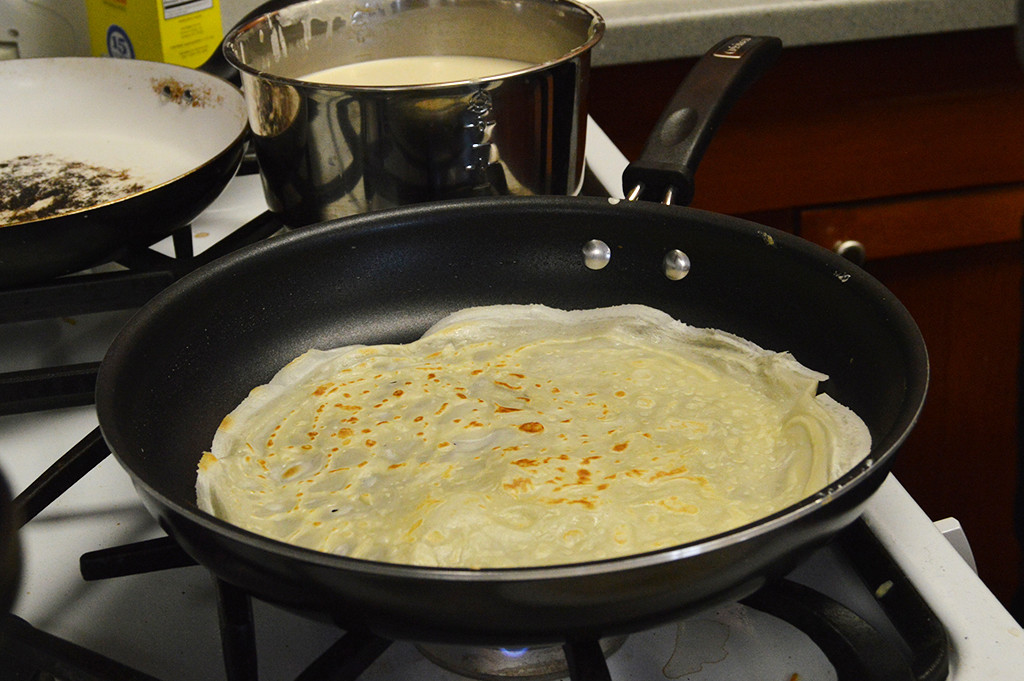
Photo by Amanda Ryvkin
Crepes, which originated from Brittany, were once made using buckwheat, but on Friday, February 12 at the Columbia University French Cultural Society’s (FCS) “Crêpe Atelier”, we worked with white-flour crepe batter, an innovation from the turn of the 20th century. And when you’re using white-flour crepes, expect them to be lighter and fluffier than anything they were making in 17th century France.
We didn’t get to try out preparing the batter, but Yvonne Hsaio, President of FCS, graduate from Le Cordon Bleu in Paris, and the main mastermind behind the whole event told me a rumor that the recipe’s secret ingredient is beer (turn up!) which needs a whole night to sit and eventually rise for a “light and delicate” batter.
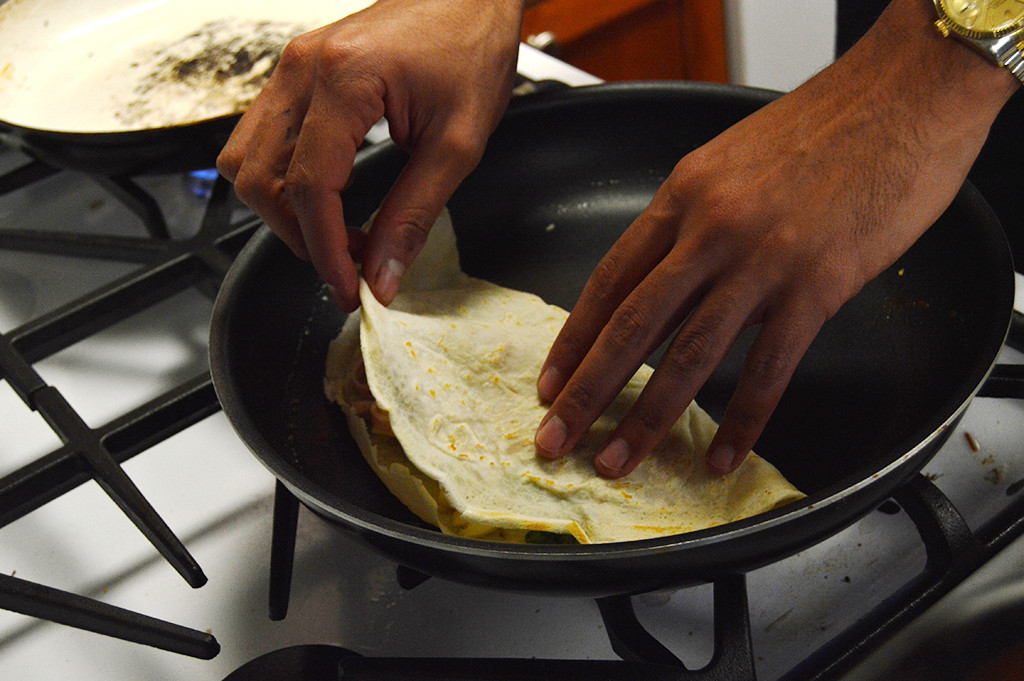
Photo by Amanda Ryvkin
After answering some crepe trivia, we all got the chance to get our hands dirty pouring, flipping and filling our own crepes, all to the soothing sounds of some Amelie-esque #French background music.
FCS didn’t skimp out either. The board provided an huge spread of savory and sweet fillings, selected by Yvonne. From savory goods like asparagus, ham, mushrooms, multiple types of cheeses (classic French) and eggs to sweet toppings like Nutella, banana slices and blueberries, practically every crepe ingredient you could ever want was there.
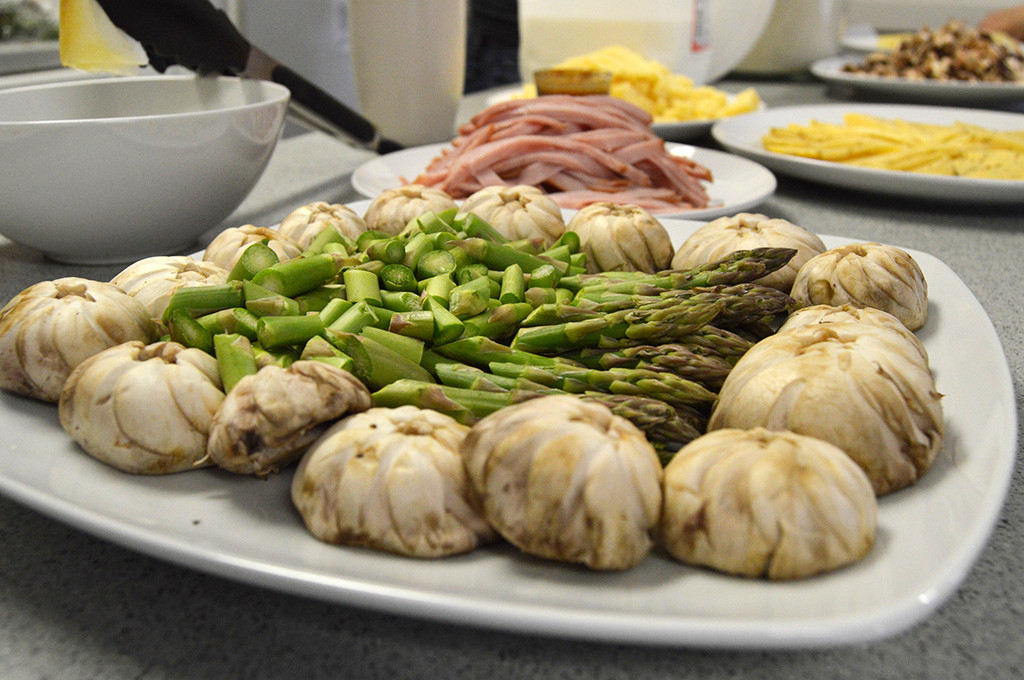
Photo by Amanda Ryvkin
I honestly came in a little intimidated, but FCS was so inviting (and my crepe, so delicious!) that I think I might be on my way to becoming a crepe master. Here are some tips and tricks to crepe-making that I learned during the atelier (shout out to Pierre Sevan Suignard, a FCS member who stood by the stove and showed us all how it’s done):
1. Lift the pan from the flame first before putting on butter (to prevent it from burning) and add a good amount of butter so it doesn’t stick. This isn’t the time to go easy on the butter and feel “healthy”: you’re making crepes, so embrace it!
2. When you ladle in the batter, keep the pan away from the flame and angle it so the batter can run down its length. It’s like a beautiful waterfall of sweet goodness.
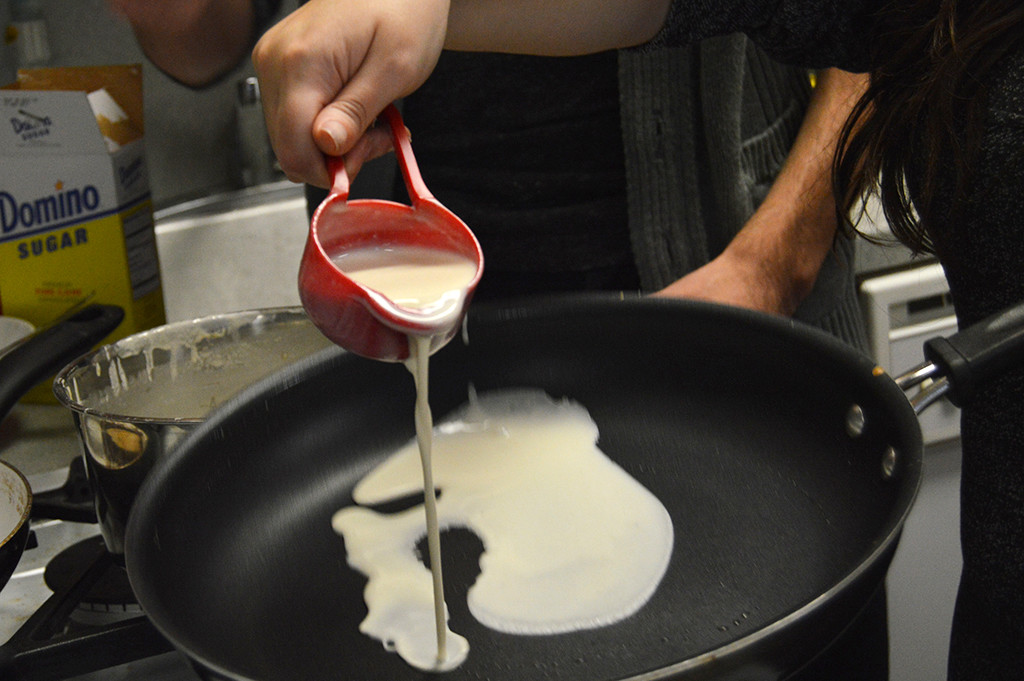
Photo by Amanda Ryvkin
3. To distribute the batter evenly, make a circular motion with your wrist, and continue spinning the pan until the batter stops running. This is one of the trickier parts for sure, but you feel very skilled if you get it right.
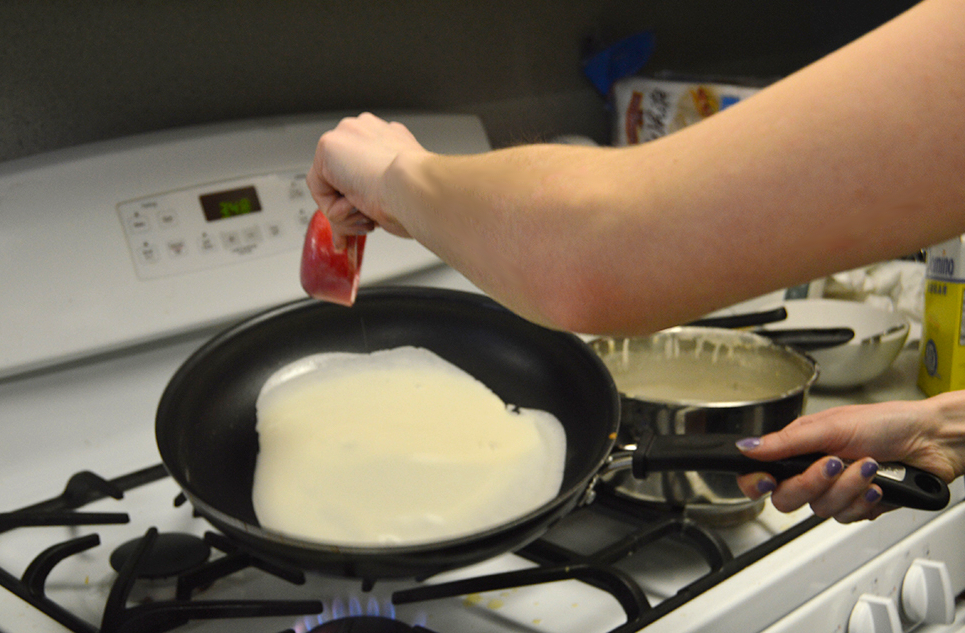
Photo by Amanda Ryvkin
4. Wait until the edges start to get crispy before you try to flip the crepe. I know you want your crepe already, but patience, my friends.
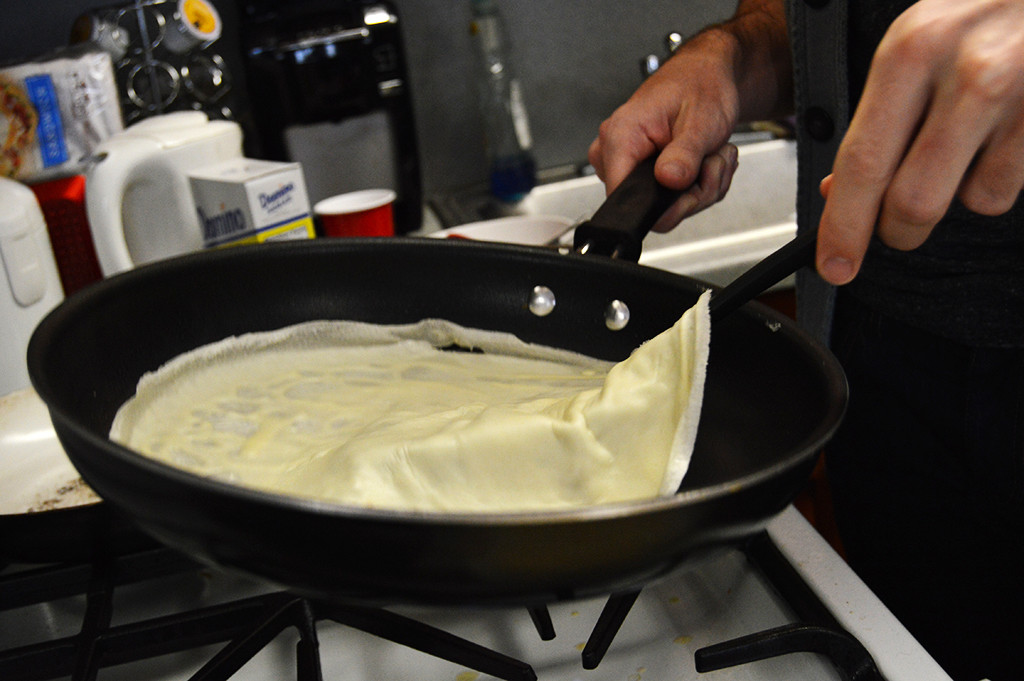
Photo by Amanda Ryvkin
5. Add any toppings and enjoy! Bon appétit!


